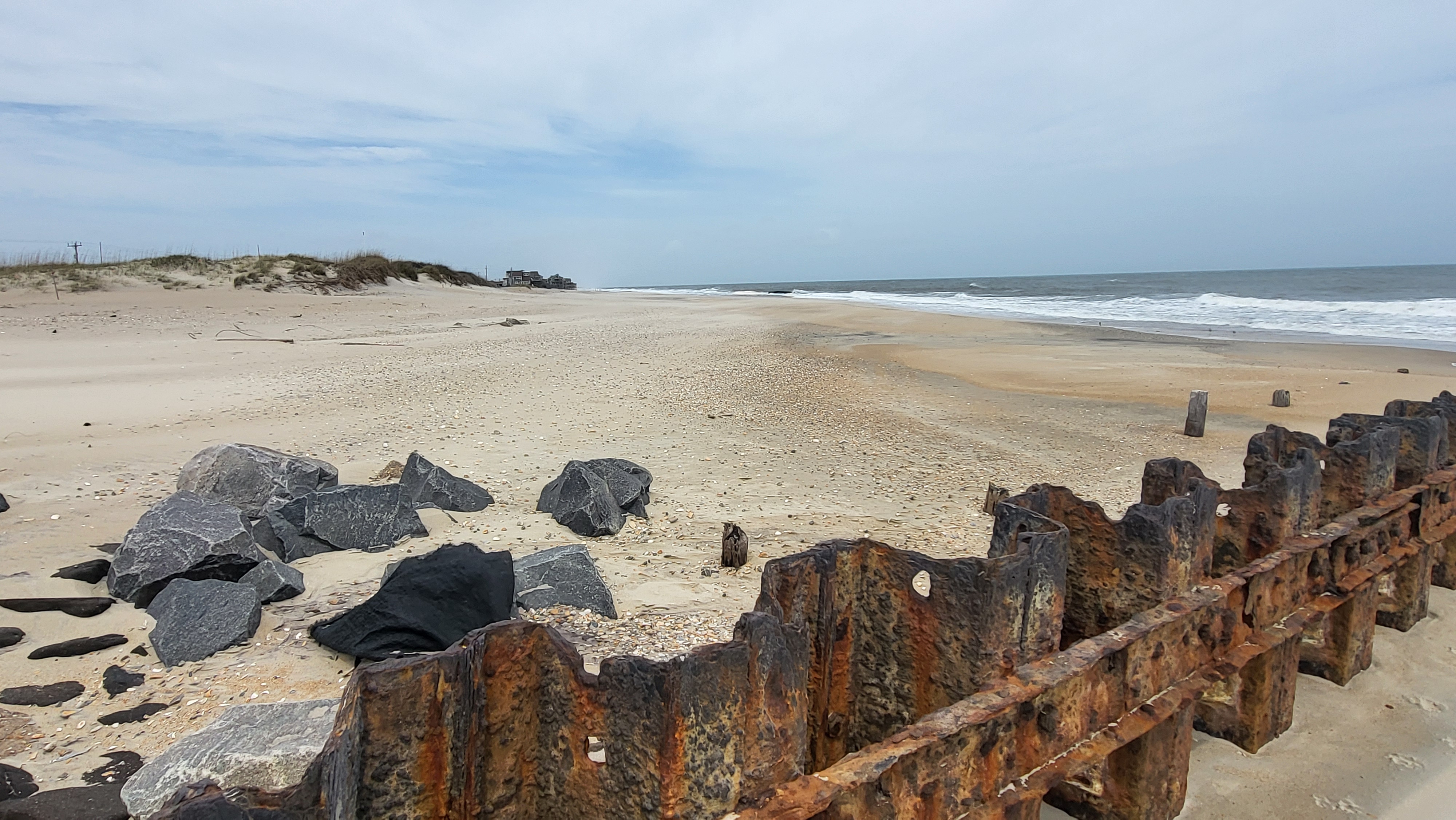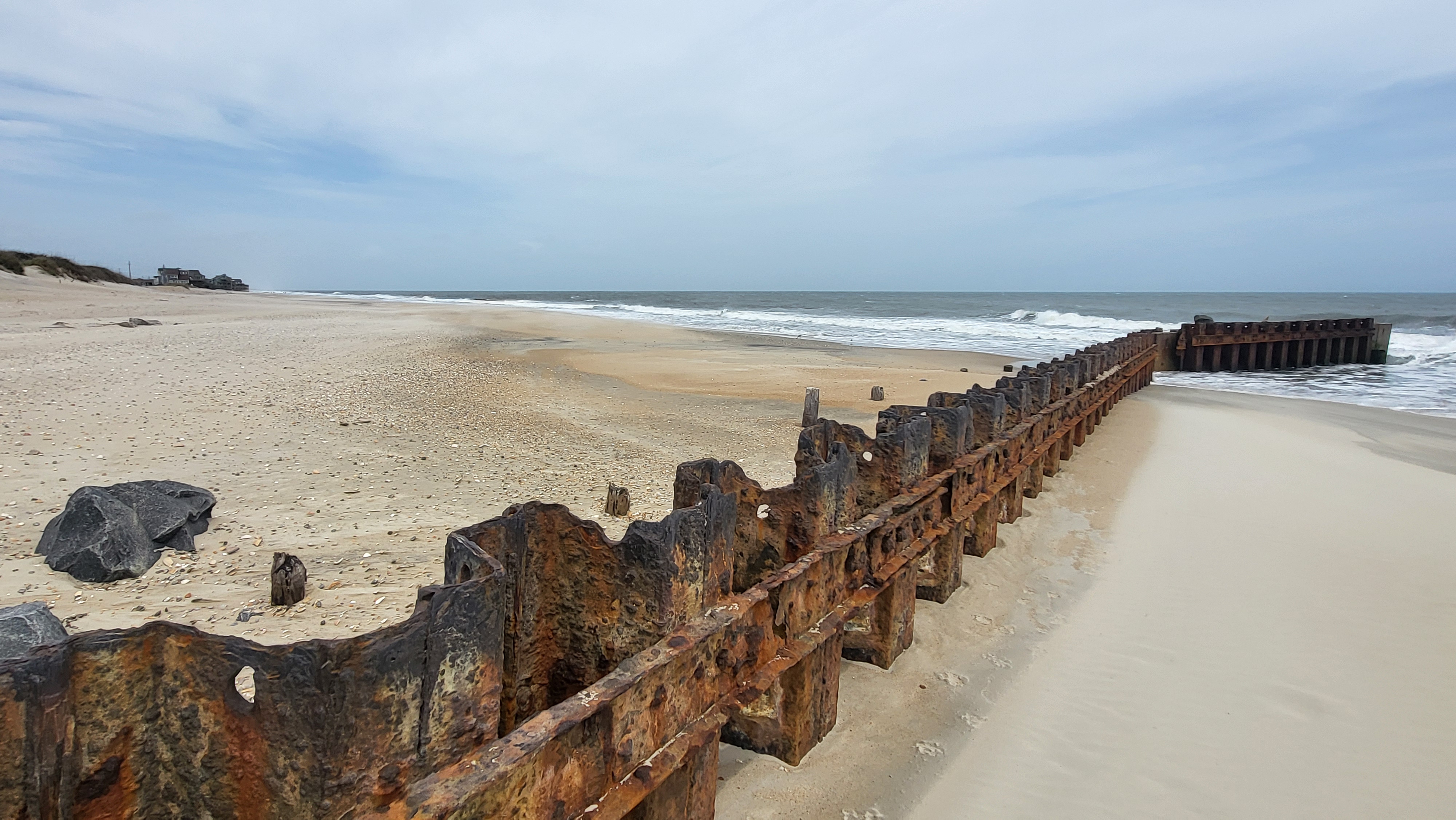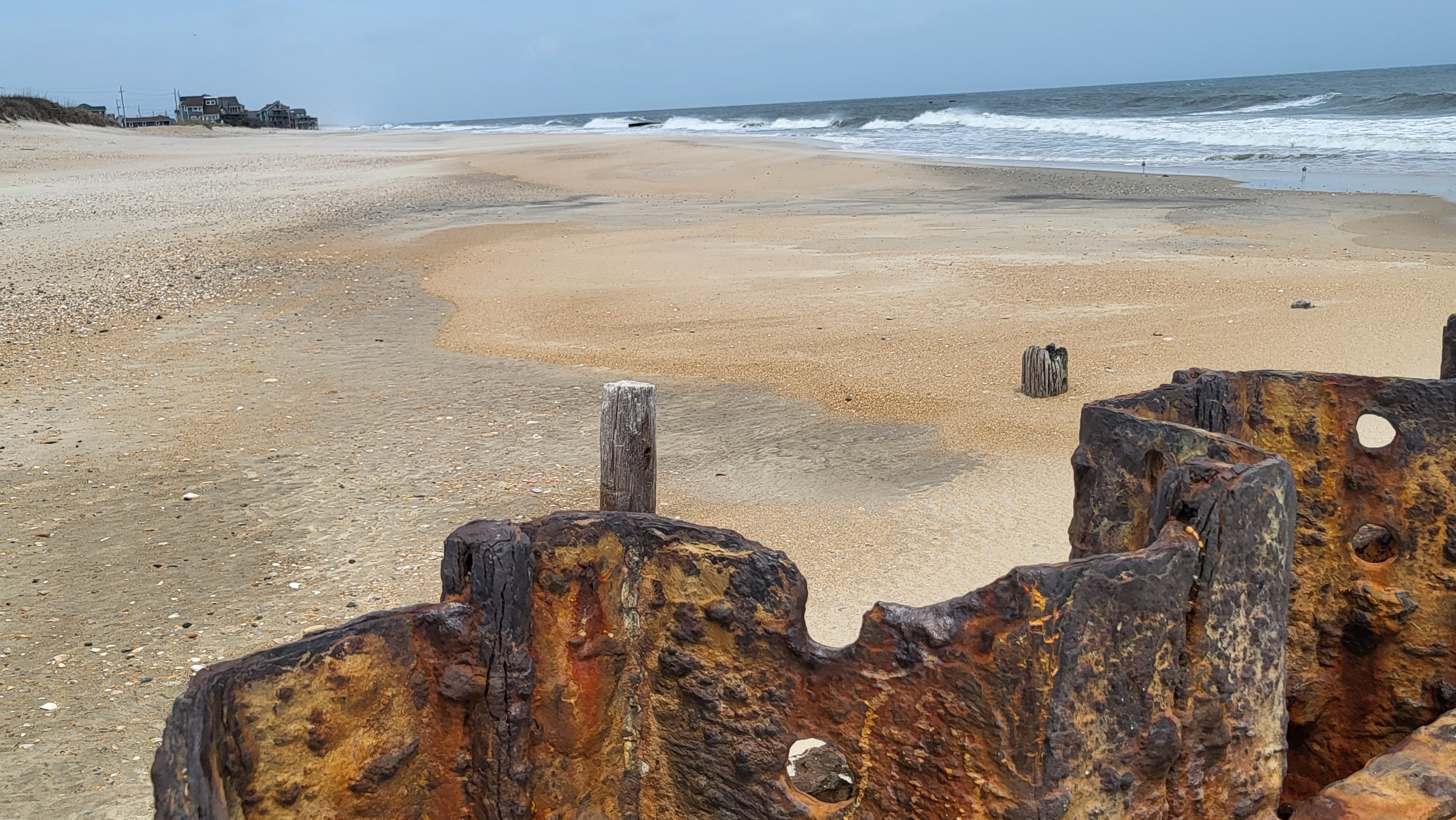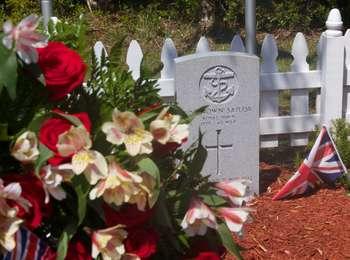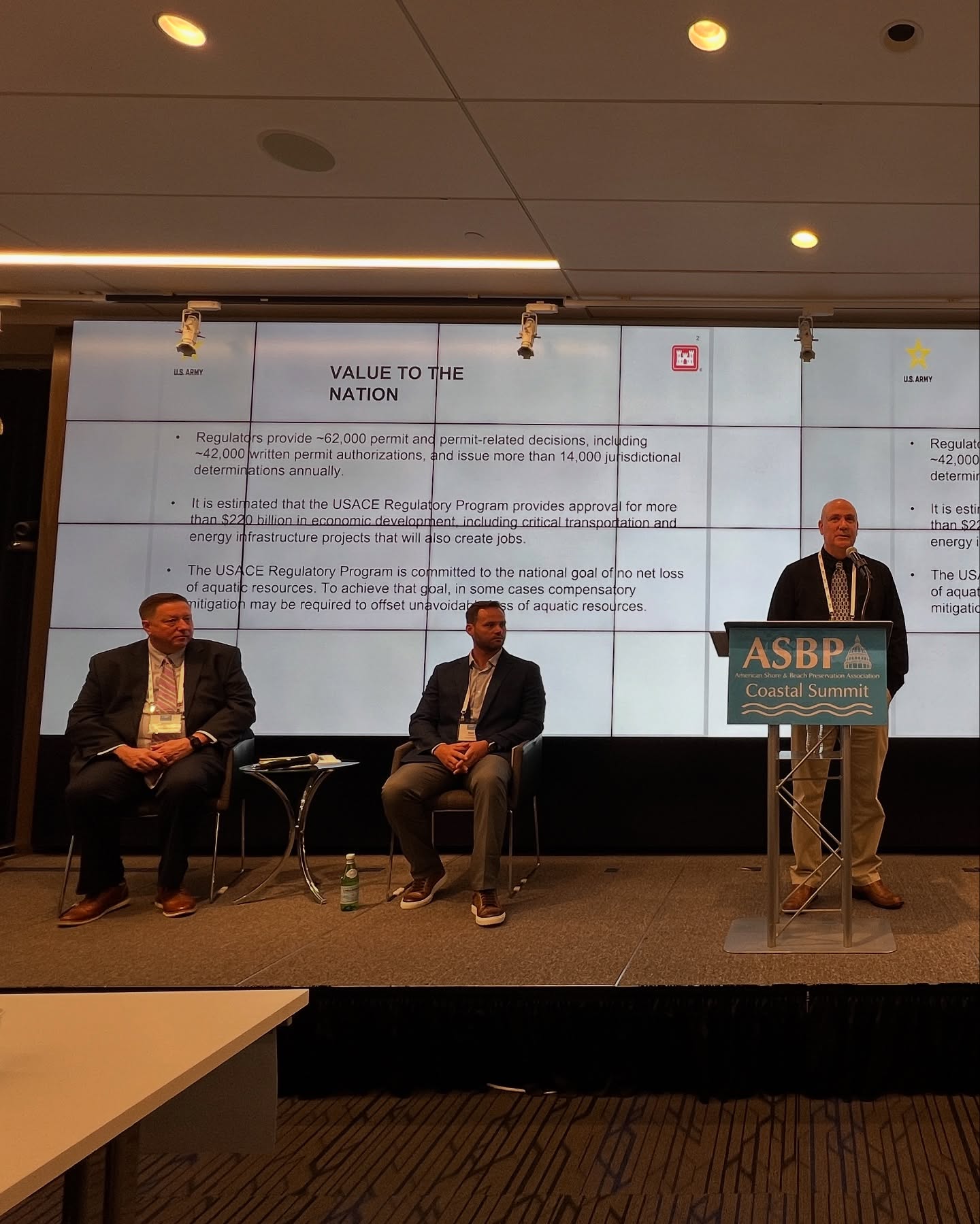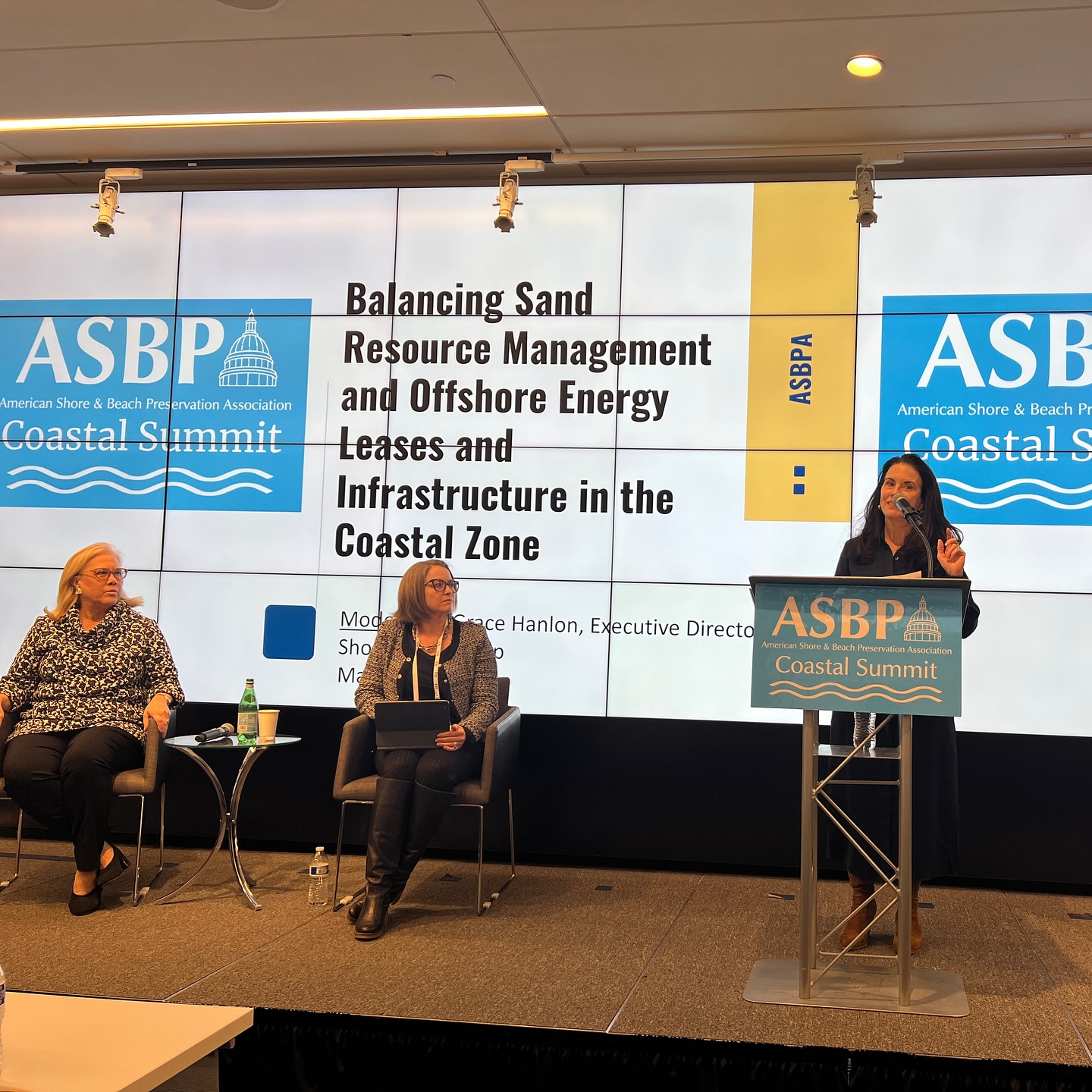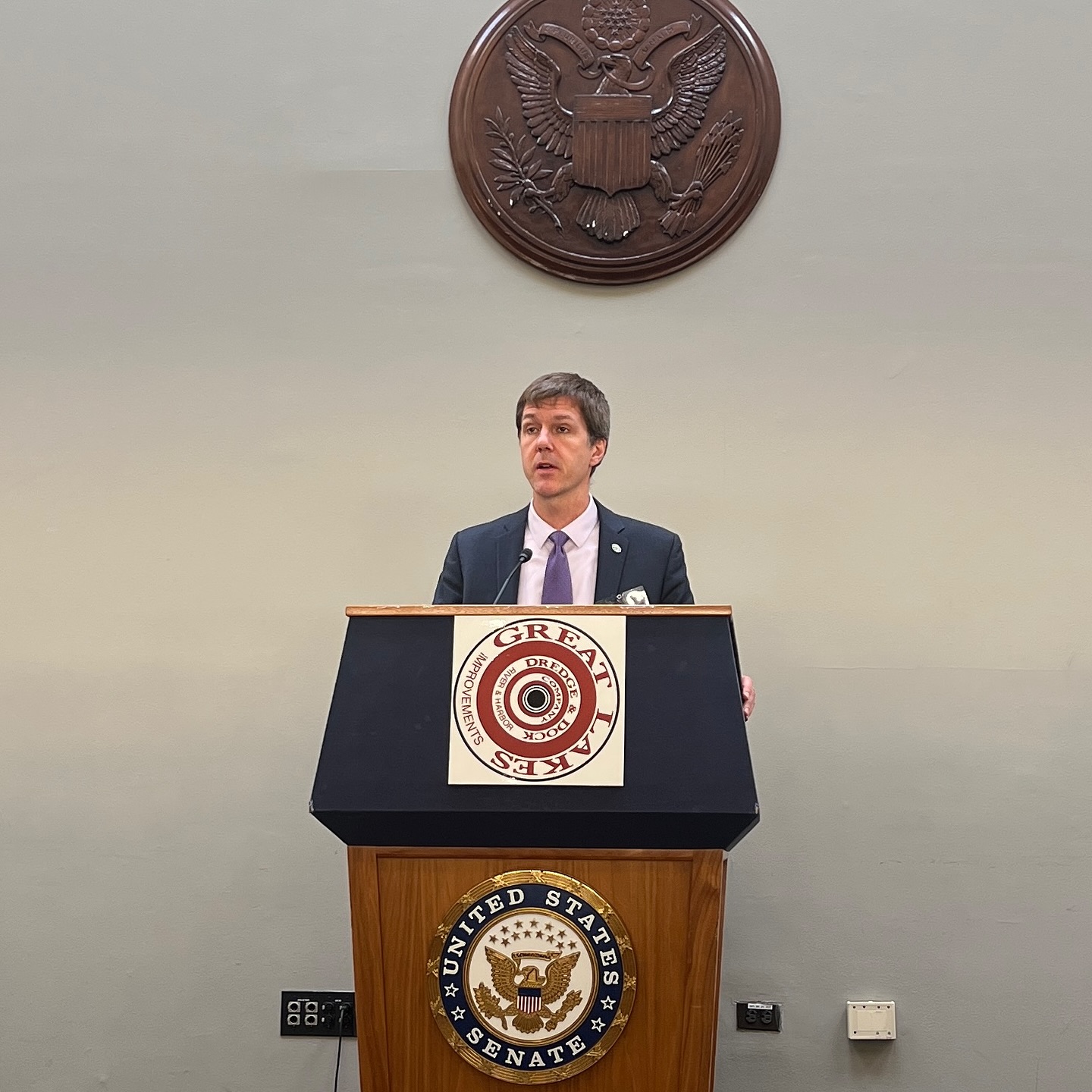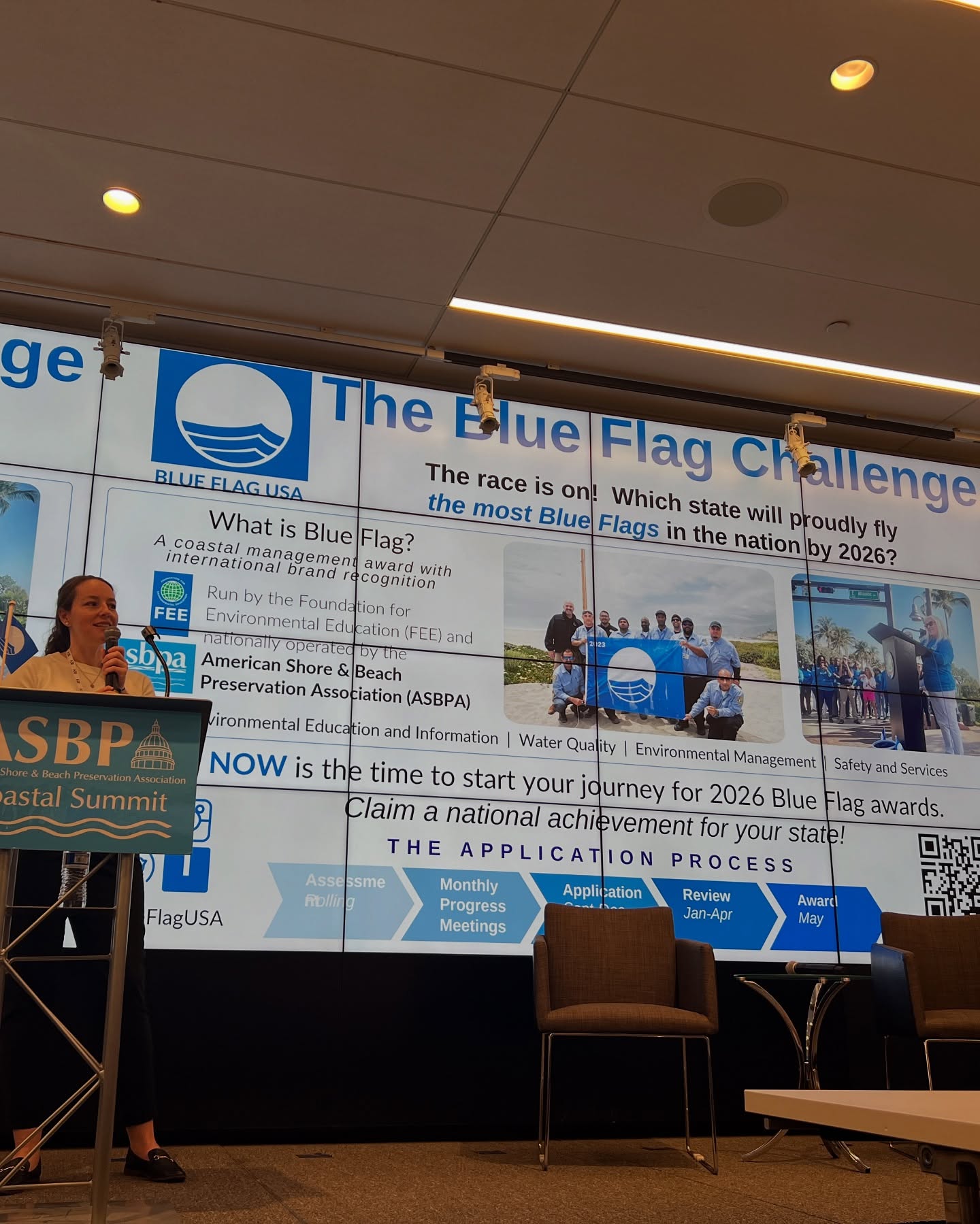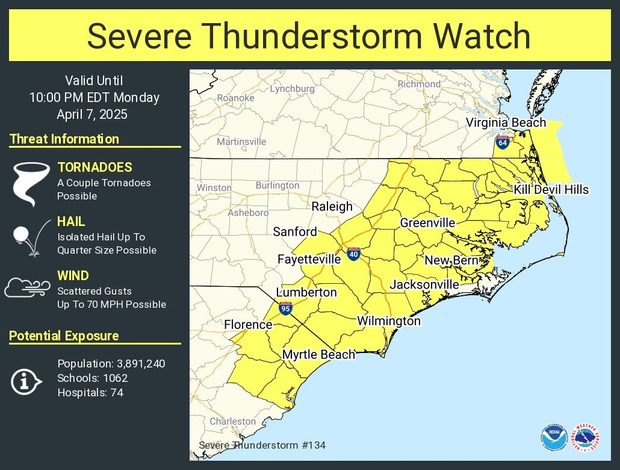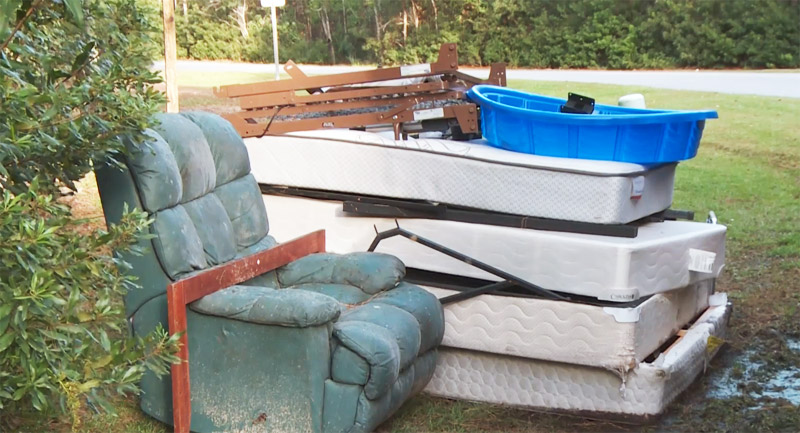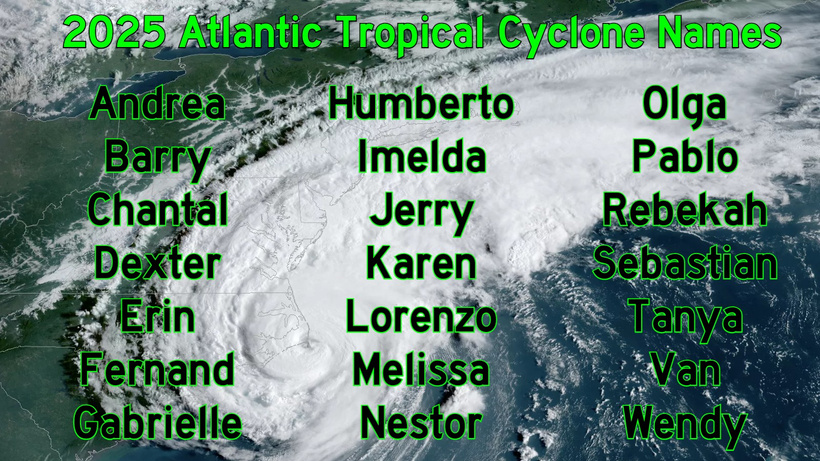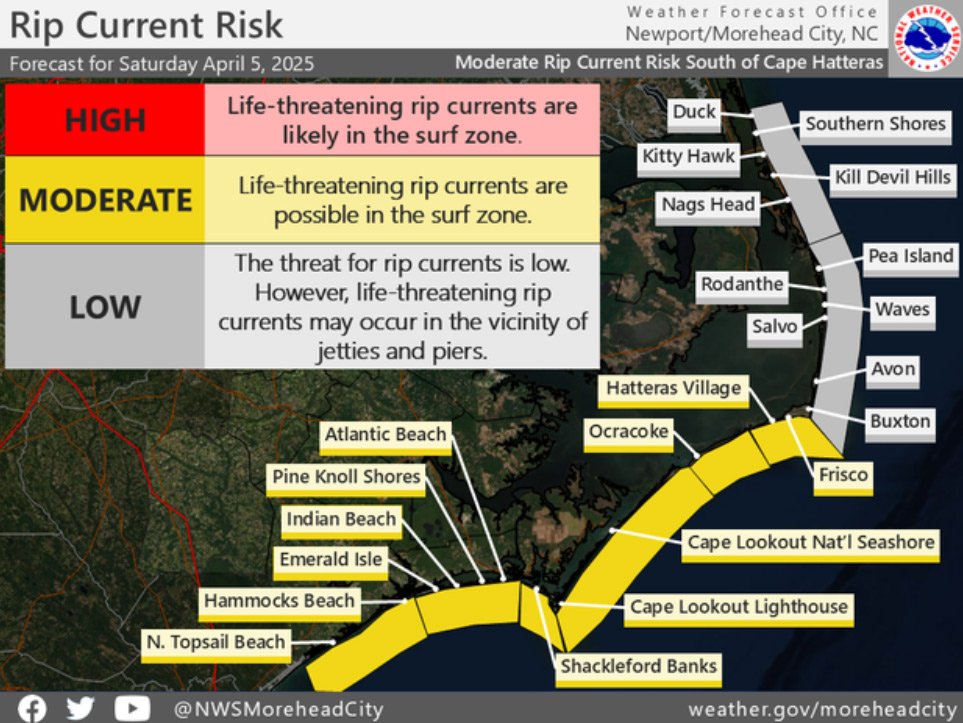With the Miss Katie and Federal Realignment, dredging in Hatteras Inlet may be easier in the future

There was some good news at the Dare County Waterways Commission meeting in Buxton on Tuesday evening, October 11, with several factors combining to make dredging the channels of Hatteras Inlet easier in the not-so-distant future.
Per an update from Todd Horton, deputy chief of navigation for the US Army Corps of Engineers Wilmington District, the long-awaited Rollinson Channel realignment is expected to be approved by the end of October.
“Right now, we’re expecting to have that completed and signed in the next two weeks,” said Horton. “By our next meeting [in November], all of that should be finalized.”
The federal realignment will expand the area included in the existing federal authorization for Rollinson Channel, a long-sought revision that would eliminate the need for excess permits for Hatteras Inlet dredging operations.
The 132-page Environmental Assessment was first introduced in the fall of 2021, and despite some revisions and delays along the way, (due to the required approval from multiple agencies), the realignment of the channel will allow the Corps and its contractors to have much more flexibility to dredge whenever and wherever is needed in Hatteras Inlet.
Another benefit of the realignment would be that federal funds would be available for future dredging projects, as the entire channel would be under federal authority and would no longer be a “no man’s land” with no entity – federal or state government – taking responsibility for dredging events.
However, questions were raised at Tuesday’s meeting about how much federal funds would actually be available for dredging in both the short term and the long term, with no immediate answer on an exact amount.
“One thing I’ll need to verify is exactly how much federal funding we have,” said Horton.
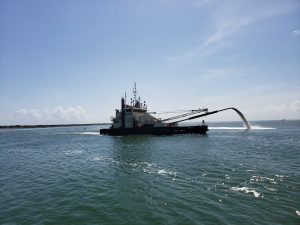
Earlier in the year, $2.5 million was allocated for the inlet’s pipeline dredging event, while an additional $1.4 million was allocated for dredging in the federal Infrastructure Bill, but it is unclear if any of that money remains for the months ahead. “We’ll need to see if we have any federal funds that have not been expended,” said Horton.
In the meantime, Commissioner Chairman Steve “Create” Coulter reported that the channels of Hatteras Inlet have remained navigable in recent weeks, and that “there have been few changes since [Hurricane Ian.] It’s gotten narrower, and it’s gotten shallower in a couple of spots.”
A one-time special dredging event for Hatteras Inlet is currently scheduled around October 23, after the Corps finishes a roughly three-week-long dredging project in Lockwoods Folly Inlet in between Holden Beach and Oak Island, N.C. “As soon as we can complete Lockwoods Folly, we’ll [head to] Hatteras Inlet, and we’re hoping to correspond that with the approval of the realignment,” said Horton.
The environmental window to dredge in Hatteras Inlet is October 1 through March 31, and any project outside that timeframe requires a special permit, which is currently in the process of being approved for the planned late October dredging.
The upcoming dredging in October might also correspond with another piece of good news, and another tool that will help keep the inlet open for the long term – the arrival of the Miss Katie dredge.
The construction and acquisition of the Miss Katie dredge is a county-launched project that has been in the works since 2016.
In 2019, the Dare County Board of Commissioners unanimously approved a contract for the construction and operation of a new shallow-draft hopper dredge for use in the various channels and inlets throughout the county. The vessel is able to operate in both Oregon and Hatteras Inlets for up to 12 hours a day, and will be a county-managed resource to continually keep both inlets open.
The Miss Katie has already been at work in Oregon Inlet over the past few days, but stakeholders noted that the dredge can most effectively operate in water depths of 7’ ft. or more. Typically, dredging in Hatteras Inlet’s channels is conducted by a sidecaster dredge – namely the Corps’ Merritt dredge – which is less effective, but is operational in shallower waters.
“The [Miss Katie] is a lot like the Corps’ hopper dredge, the Murden, where it’s tough to get it in if it’s less than 7’ feet,” said Barton Grover, commission administrator.
As a result, the upcoming October 23 dredging event presents an opportunity for the Miss Katie to work in Hatteras Inlet soon afterward, and at optimal depths.
“If we can get [the Connector Channel] to a good depth with the Merritt, we should get the Miss Katie here soon after to dredge even more,” said Coulter. “The wider we get it, and the deeper we get it, the longer it’s going to last, hopefully.”

One of the biggest frustrations over the past several years for the Waterways Commission, and all vessels that regularly trek through Hatteras Inlet, is the fact that once a dredging event is complete, shoaling overtakes the progress made within weeks, if not days. By enlisting the Miss Katie to follow up after the Merritt dredges, the hope is that the channel can achieve a depth and breadth that is easier to maintain in the long run.
It costs roughly $30,000 per day for the Miss Katie to dredge, and Hatteras Inlet has approximately $800,000 in county funds designated for upcoming dredging projects through 2023. All dredging operations for the Miss Katie are managed by the Oregon Inlet Task Force, which includes the dredge schedule for the months to come.
Because using the Miss Katie dredge to target the channels of Hatteras Inlet is an entirely new endeavor, the one question that remains for the Dare County Waterways Commission is exactly how long they’ll need to dredge after the Merritt has deepened and expanded the area.
With this unknown timeframe in mind, the Commission passed a resolution to ask the Oregon Inlet Task Force to allow the Miss Katie to come into the inlet after the Merritt, with the length and time to be determined once dredging is underway.
“We’d love to see the Miss Katie come in early November, after the Corps has been there,” said Coulter, “And by the end of October, we should have all the permits in hand [and the federal realignment approved] to make that happen.”
There were several unknowns presented at the meeting besides the amount of federal funds available for future dredging projects once the realignment is approved, and how effective and quickly the Miss Katie could work in Hatteras Inlet.
Another puzzle discussed by the commission was the depth of the underwater Tideland Electric Membership Corporation (EMC) cables, which could present a problem for imminent dredging events.
A small section of the Connector Channel intersects with the cables, (which were installed in the early 2000s), and Horton expressed concern that the cables were not deep enough for the Corps to legally dredge in this specific area. “No dredging can occur if cables are shallower than 15’ feet below mean water levels,” said Horton. “The last thing anyone wants to do is cut those cables.”
Recent surveys will be examined to see if the cables’ depth will present an issue, and in the meantime, the Connector Channel may have a “speed bump” if the Corps has to bypass the underwater cables in their late October dredging event.
Time will tell if the launch of the Miss Katie dredge as well as the federal alignment approval will make a big difference when it comes to keeping the Hatteras Inlet channels navigable. Funding and other newly-discovered concerns – like the depth of the Tideland EMC cables – continue to loom as potential setbacks in the future.
But considering that there was an arsenal of navigation challenges for the first few months of 2022 – and solutions to ease the accessibility of dredging are on the horizon – there was reason to be optimistic for the months ahead.
Commissioners Steve Coulter, KP Scott, Michael Flynn, Natalie Kavanagh, Ernie Foster, and Kermit Skinner were in attendance at Tuesday’s meeting. The next meeting is scheduled for November 14 at 7 p.m. in Manteo.




